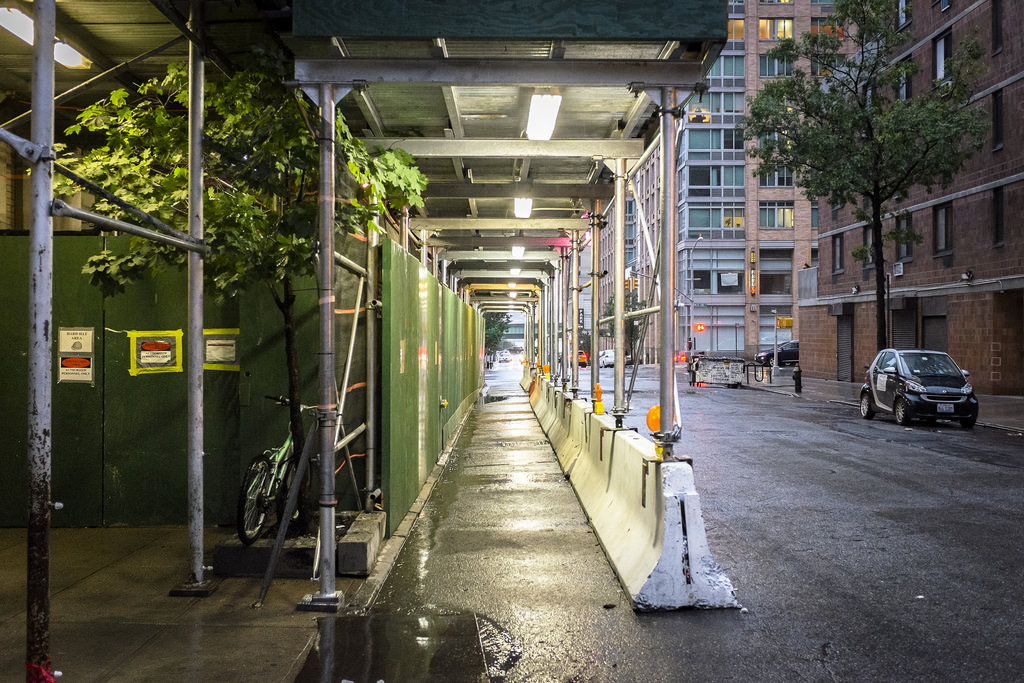Pedestrians are all too aware of sidewalk sheds, the makeshift plywood, sheet metal, and concrete scaffolding tunnels that shield city street walkers from debris from nearby construction projects. While the sheds are functional enough, New York believes they can be aesthetically pleasing, too.
Curbed NY reports that the New York Building Congress will hold a competition where architects and other professionals in the construction industry will submit proposals for alternative sidewalk shed designs. New York, which has nearly 200 total miles of sidewalk sheds, is seeking a concept that is practical but that also looks good.
"In the course of their daily lives, millions of New Yorkers are forced to encounter sidewalk sheds that can best be describe as dark, constrictive, and forbidding. It's time we stopped treating their design as an afterthought," Tom Scarangello, Chairman of the New York Building Congress, said in a statement.
The number of permits for sidewalk sheds in New York rose 25% from 2009 to 2014, and some sheds could stay up for several years whether construction is occurring or not. Local businesses have also been negatively affected by the sheds, and it turns out the structures aren't always safe.
The contest's four winners will be announced in September, and they will receive $10,000.
Related Stories
| Dec 12, 2011
Mojo Stumer takes top honors at AIA Long Island Design Awards
Firm's TriBeCa Loft wins "Archi" for interior design.
| Dec 10, 2011
10 Great Solutions
The editors of Building Design+Construction present 10 “Great Solutions” that highlight innovative technology and products that can be used to address some of the many problems Building Teams face in their day-to-day work. Readers are encouraged to submit entries for Great Solutions; if we use yours, you’ll receive a $25 gift certificate. Look for more Great Solutions in 2012 at: www.bdcnetwork.com/greatsolutions/2012.
| Dec 10, 2011
Energy performance starts at the building envelope
Rainscreen system installed at the west building expansion of the University of Arizona’s Meinel Optical Sciences Center in Tucson, with its folded glass wall and copper-paneled, breathable cladding over precast concrete.
| Dec 10, 2011
Turning Balconies Outside In
Operable glass balcony glazing systems provide solution to increase usable space in residential and commercial structures.
| Dec 10, 2011
BIM tools to make your project easier to manage
Two innovations—program manager Gafcon’s SharePoint360 project management platform and a new BIM “wall creator” add-on developed by ClarkDietrich Building Systems for use with the Revit BIM platform and construction consultant—show how fabricators and owner’s reps are stepping in to fill the gaps between construction and design that can typically be exposed by working with a 3D model.
| Dec 9, 2011
BEST AEC FIRM 2011: Chapman Construction/Design
Taking sustainable practices to heart.
| Dec 9, 2011
BEST AEC FIRMS 2011: EYP Architecture & Engineering
Expertise-Driven Design: At EYP Architecture & Engineering, growing the business goes hand in hand with growing the firm’s people.
















